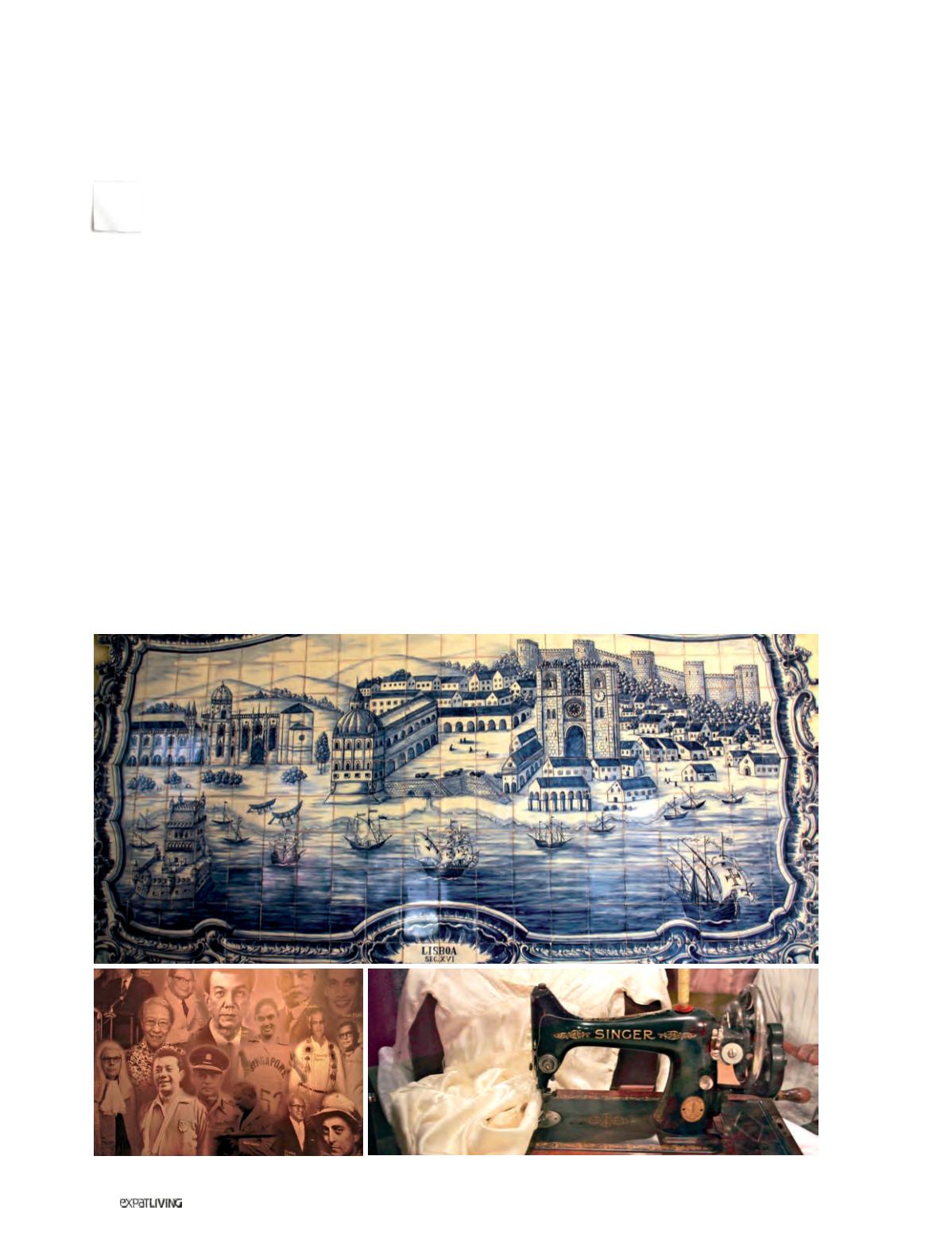

ARTS&LEISURE
162
June14
Eurasian Association
139 Ceylon Road
6447 1578 | eurasians.org.sg
You don’t have to be a member to
visit the Eurasian Association, have a
look at its museum or eat at Quentin’s
restaurant, but it’s best to check opening
times in advance. As a Eurasian herself,
Geraldene is a member, serving on its
Heritage Committee.
“My father’s side is Russian,” she
informs us. “His grandfather married a
Chinese lady in Shanghai and brought
her to Singapore. My mother’s family was
called Luth and came from Schleswig-
Holstein, then part of Denmark. During
Bismarck’s unification of Germany,
they headed to Asia and Australia
and married people from various
nationalities.” The
museum
downstairs
is small but interesting. I like the Singer
sewing machine, just like the one my
late granny used to make dresses for
me as a child and a teenager. Upstairs
is another area that deals with the
experiences of Eurasians during the
Japanese Occupation. “Our passports
called us ‘Others’,” she remembers.
“But now we have the choice of putting
the word ‘Eurasian’ there, our official
numbers have swelled.”
As usual, Geraldene is full of snippets
of information. One of Singapore’s more
illustrious Eurasians, she says, was
the country’s second president, the
gynaecologist
Dr Benjamin Sheares
(yes, the bridge is named for him).
When he was living at the Istana, he
would nip out of the back entrance to
deliver babies at the aforementioned
KK Women’s and Children’s Hospital
on Bukit Timah Road.
Decorative Portuguese blue-and-
white tiles reflect the fact that many of
the Eurasians here are of
Portuguese
origin
; their names feature strongly on
the gilded lists of Association office-
bearers. Portuguese spice-traders
first sailed to Malacca in 1509, having
already established settlements in Goa
and other parts of India.
In past times, many Eurasians lived
in the Katong area, as did the younger
Geraldene herself. Others favoured the
WaterlooStreet area, because theywent to
theCatholic schools that used to be there.
Interracial marriage
was very
common incolonial days, saysGeraldene.
Evenmen who had European wives often
had “a bit of curry-puff on the side” (in her
words). European women transplanted
to Southeast Asia tended to die young;
and men of retirement age, instead of
going back to cold Europe, would settle
in Australia with their Asian women,
she says. Apart from being warmer,
Down Under was perhaps a tad less
judgemental, too.
“In fact,” she adds, “many Singaporean
Eurasians have migrated to Australia.
At one time, if you could prove that
you were Christian, or half-European,
that was all it took. Often, a European-
sounding name was enough.”
#2
STOP



















